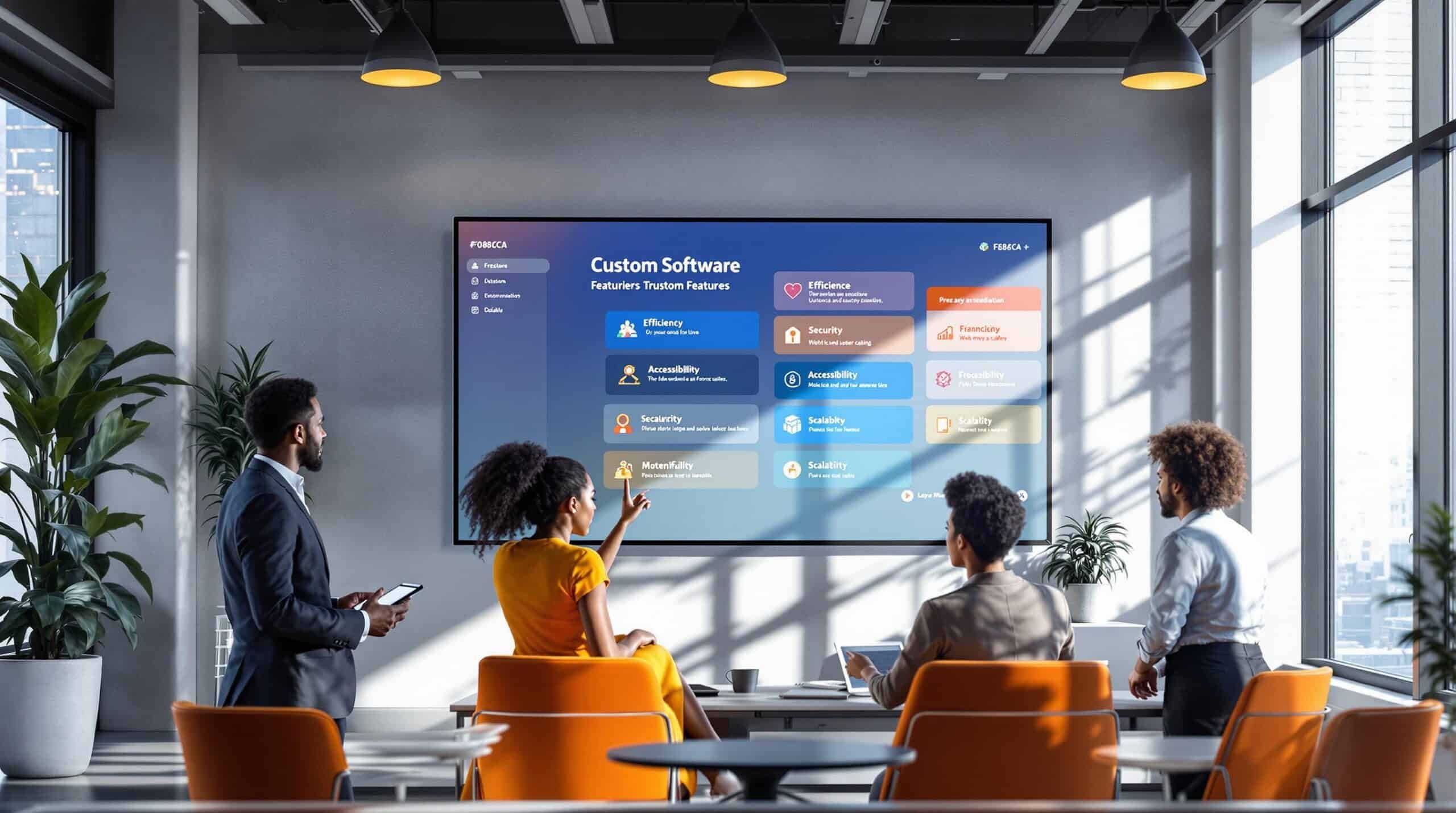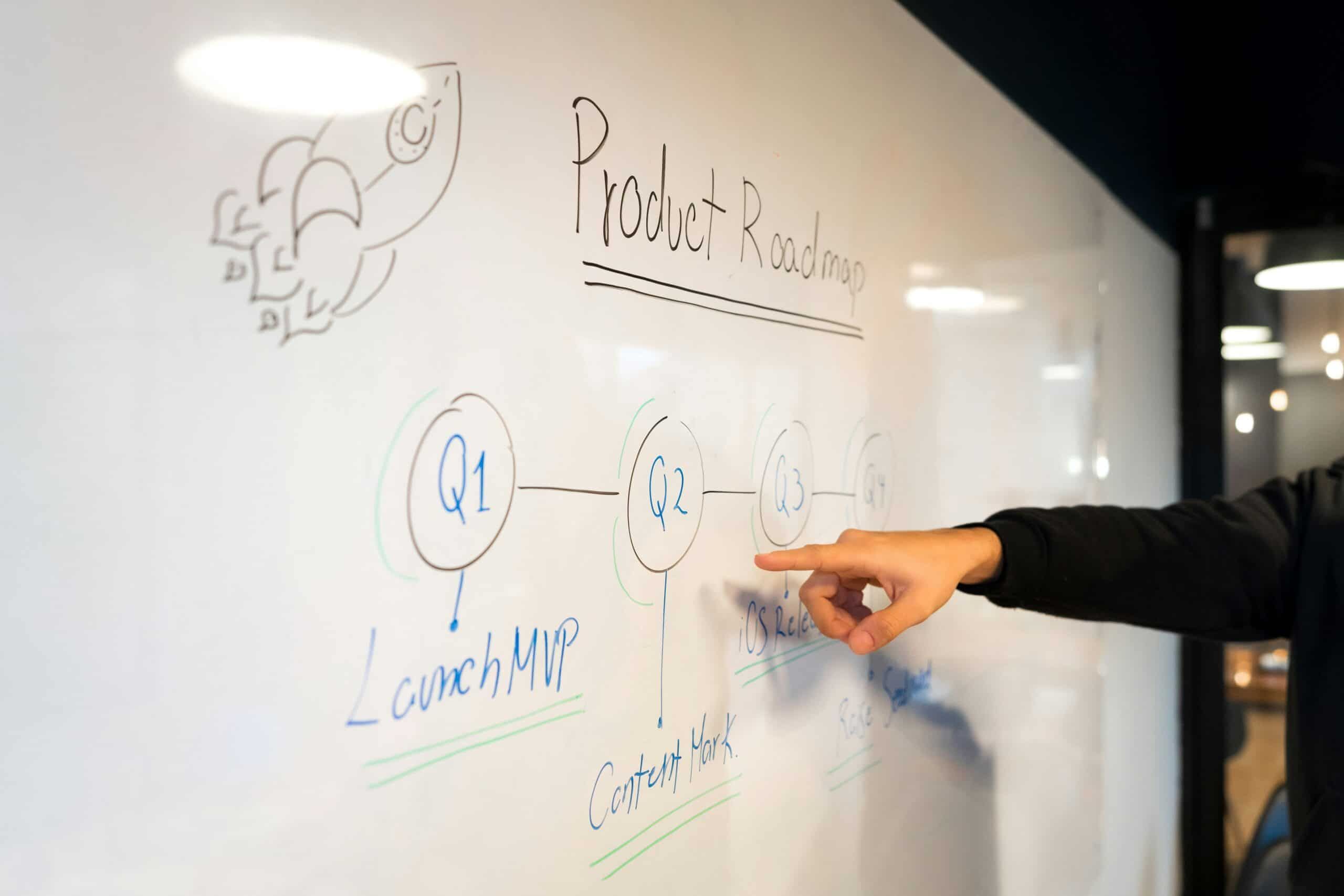Software Development Teams Need These 7 Collaboration Methods in 2025

Our software development teams face a clear reality – shared goals drive success. Teams united by common objectives consistently outperform others by five times. Yet finding collaboration methods that deliver real results remains a persistent challenge for many development teams.
The path to effective collaboration starts with two fundamental elements: building trust through transparency and consistent processes. Traditional methods like waterfall served us well in the past, but they no longer meet the demands of modern development environments.
Through extensive testing and real-world implementation, we’ve identified seven collaboration methods producing measurable results this year. These methods blend time-tested practices with practical technology applications. The results speak for themselves – teams achieve more, whether working side by side or across multiple time zones.
Our focus remains on methods that work in actual development environments, not theoretical frameworks. Each approach we’ll discuss has proven its worth through successful implementation across different team structures and project types.
Agile Stand-ups with a Modern Twist

Image Source: Agile Pain Relief Consulting
Our daily stand-ups look different today than they did in the 1990s [16]. The old routine of answering three questions has given way to something more powerful – focused discussions that drive sprint goals forward.
Evolution of Daily Stand-ups
Stand-up meetings now run exactly 15 minutes with an average of 9.6 team members [18]. We’ve found teams achieve better results by asking one essential question: “How can we move closer to our sprint goal today?” [1]. This simple shift makes our meetings more productive and purposeful.
Virtual Stand-up Best Practices
Remote work changed everything about how we run stand-ups. Our distributed teams combine asynchronous updates with focused real-time discussions [19]. Success demands three key elements:
- Cameras on – body language matters
- Visible sprint backlogs for all
- Clear audio equipment that works [17]
Stand-up Tools and Platforms
The right tools make stand-ups flow naturally. Take Geekbot – they’ve grown to 170,000 users, serving teams at GitHub, GitLab, Shopify, and Salesforce [16]. These platforms give us asynchronous updates, custom questions, and smart timezone handling.
Measuring Stand-up Effectiveness
We track stand-up success through clear indicators. Teams see the biggest wins in activity overview, problem-solving speed, and meeting efficiency [18]. Our key metrics include:
- Burn down progress
- Actual vs estimated time to complete
- Team participation levels
- Consistent meeting length
The best part? Good stand-ups eliminate other daily meetings [17]. Teams using our modern approach spend just 5 minutes on updates instead of sitting through 30-minute sessions [16].
Cross-functional Collaboration Pods
“Agile teams produce a continuous stream of value, at a sustainable pace, while adapting to the changing needs of the business.” — Elisabeth Hendrickson, Software quality and process expert

Image Source: Inclusion Cloud
Small, focused teams deliver big results. Our cross-functional collaboration pods, typically 5-7 members [4], bring together diverse talents to tackle specific product features. Think of these pods as specialized strike teams – each member brings unique expertise while sharing a common mission.
Setting Up Collaboration Pods
Pod structure demands thoughtful planning. We’ve found success combining product owners, engineers, designers, business analysts, and project managers into unified teams [5]. Each member needs ‘T-shaped’ skills – deep expertise in their domain plus broad knowledge of related areas [6].
Building effective pods means focusing on:
- Design, development, and testing expertise working as one
- Skills that complement and complete each other
- Team members sharing similar time zones
- Crystal-clear role boundaries
Pod Communication Strategies
Communication makes or breaks a pod’s success. Our best pods run daily progress checks and keep stakeholder channels wide open [7]. The results speak volumes – stronger client relationships and deeper project understanding [8].
Pods naturally boost collaboration through:
- Open lines between all team members
- Cross-team sync-ups that matter
- Shared spaces for real-time work
- Documentation everyone understands
Pod Performance Metrics
Numbers tell the truth about pod performance. Here’s a sobering fact – approximately 75% of cross-functional teams fail without proper metrics [20]. We track three key areas:
- Estimates vs Actuals
- Team velocity
- Issue resolution time
- Process Efficiency
- Code quality metrics
- Team velocity
- Delivery Metrics
- Features delivered per iteration
- Defect rates in UAT
The proof lies in the results. Our pods turn month-long projects into week-long wins [5]. Clear metrics and guidelines make this possible, but it’s the people working together that make it happen.
AI-Powered Code Review Systems

Image Source: Reddit
Code quality demands both speed and precision. AI-powered code review systems deliver both, catching issues human reviewers might miss while processing code at remarkable speeds [11].
AI Code Review Tools
GitHub Copilot X, DeepCode, and Codacy stand out in the current landscape. These tools spot syntax errors, security gaps, and quality issues by comparing code against vast pattern libraries [12]. They don’t replace our human reviewers – they make them stronger.
Human-AI Collaboration in Reviews
Magic happens when human insight meets AI speed. AI processes thousands of code lines instantly, while our developers bring context and creative solutions to the table [12]. Together, they reach quality levels neither could achieve alone [3].
Code Review Best Practices
Success with AI review systems demands a clear approach. Four practices matter most:
- Human eyes on AI findings for complex architecture calls
- Constant AI monitoring for large codebases
- Quick feedback during development
- Clear review documentation rules
Review System Implementation Costs
Money talks when implementing AI review systems. Smart planning means looking at both obvious and hidden costs [13]. Teams need to budget for software, infrastructure, and training [13]. The investment pays off – traditional reviews eat up 18 hours per pull request, while AI tools finish in seconds [14].
AI review tools prove their worth through results. Take the SaaS company that brought in GitHub Copilot X – they saw faster reviews and better code almost immediately [12]. The key? Proper setup and human oversight make AI truly effective [3].
Asynchronous Development Workflows

Image Source: XenonStack
Location doesn’t limit great code anymore. Our distributed teams write 92% more code working asynchronously [15]. Time zones fade away when teams master async workflows.
Async Communication Tools
GitHub, Slack, and Jira form the foundation of our async collaboration [16]. These platforms let our teams work in parallel without stepping on each other’s toes. The primary application tree stays clean while continuous delivery keeps moving.
The right async tools turn months into weeks. Our teams achieve this through:
- Breaking work into smaller, independent units
- Systematic change tracking
- Rich thread discussions
- Smart pull request reviews
Documentation Standards
Documentation makes or breaks async development. A central knowledge base keeps everyone aligned [17]. We document everything – from major decisions to paths we chose not to take [16].
Our documentation covers four essential areas:
- Project rules and coding guidelines
- Decision records and meeting summaries
- Process maps and technical specs
- Version control practices
Time Zone Management
Global teams need smart time zone strategies. Tools like Timezone.io and Spacetime.am show us where our people are and when they work [18].
Success in time zone management comes down to:
- Clear response windows (we stick to 12-24 hours) [19]
- Written updates over video calls [17]
- Central project tracking
- Shared decision-making power
The proof sits in our results – higher productivity without sacrificing quality. Code keeps flowing because we don’t wait for any single person or team [16]. Our async workflows bring flexibility and better collaboration, no matter where team members call home.
DevOps Integration Platforms
“The important thing is not your process. The important thing is your process for improving your process.” — Henrik Kniberg, Agile and Lean advisor

Image Source: Smart Data
DevOps platforms changed everything about how we build and ship software. Gartner puts it well – these platforms bring together all the pieces needed for continuous delivery through Agile and DevOps practices [20].
Popular DevOps Platforms
GitLab leads the pack with AI-powered DevSecOps, putting security first in every workflow [20]. GitHub turned into the place where code comes to life through collaboration [20]. Atlassian helps teams reach their full potential, while Red Hat masters enterprise open-source [20].
Platform Selection Criteria
Picking the right DevOps platform means looking at what matters:
- How well it works with tools you already have
- What it automates for you
- Room to grow as your team grows
- Security and compliance muscle
- Community backing and documentation
- What it costs and how licensing works
Implementation Strategy
Truth time – DevOps needs both culture change and technical smarts. Start with clear goals before touching any tools [2].
The roadmap must focus on:
Kubernetes and Ansible automate infrastructure headaches [2]. Teams need Infrastructure-as-Code (IaC) to handle testing, integration, and deployment without manual work [2].
Quality checks matter more than ever after release [2]. The payoff? Month-long projects shrink to weeks [2].
Platform Pricing and ROI
Money talks – DevOps cuts development costs by 30% [21]. Top DevOps teams deploy 208 times more often than others, moving 106 times faster [21].
ROI shows up as:
- Safer deployments
- Better quality code
- Smarter resource use
- Faster market delivery
- Quick problem recovery
DevOps platforms became must-have tools for modern teams. They keep innovation flowing while handling the hard parts of team collaboration [2]. Pick the right platform, implement it well, and watch your team deliver value faster than ever.
Collaborative Documentation Systems

Image Source: The ECM Consultant
Documentation makes or breaks software projects. Our teams need more than scattered files – they need centralized hubs where documents live, grow, and stay organized [22].
Real-time Documentation Tools
Google Drive changed how we think about collaboration. Teams edit together in real-time, while versions save automatically [23]. Document360 took this further, building specialized tools for Software-as-a-Service documentation [24].
Our teams see four big wins with real-time tools:
- Everyone edits together, right now
- Feedback flows instantly
- Comments stick right where they matter
- Version history tells the whole story
Documentation Templates
Names matter more than most realize. Good file names tell us the version, content, and last update date at a glance [9]. Version control tables track who changed what and why.
Document profiles and indexes save hours of searching. Custom fields make finding anything quick and simple [22]. Standard formats mean less time hunting, more time building.
Version Control Best Practices
Version control keeps things clean – everything commits together or nothing does [25]. Each commit needs one clear purpose and a message that tells the story.
Security needs teeth. Our permission systems make sure only the right people touch sensitive docs [9]. Every edit leaves a trail, and mistakes stay rare.
Five rules keep version control working:
- Clear policies everyone knows
- Training that sticks
- Files organized with purpose
- Smart retention rules
- Document lifecycle management
Good version control software adds layers of protection – access rules, user checks, encryption [9]. But remember – even the best tools need trained teams using them right.
Virtual Team Building Activities
!Image
Image Source: Team Building
Remote teams need real connections. 77% of remote workers report higher productivity levels [26], but numbers only tell part of the story. Our challenge lies in building genuine bonds across screens and time zones.
Remote Team Building Ideas
Digital platforms open doors for meaningful team connections. Online escape rooms and virtual scavenger hunts bring our teams together, building problem-solving muscles while having fun [27].
Four activities our teams love:
- Team meetings that include some real break room talk elements
- Virtual tech talks where everyone teaches and learns
- Cross-team meetups that break down silos
- Game tournaments that spark friendly competition
Team Building Tools
Good tools make virtual bonding feel natural. Know Your Team helps our managers guide meaningful conversations that matter [27]. Gatheround turns routine meetings into engaging discussions where everyone speaks up.
Fellow, with it’s Slack add-on, helps us create effective meeting agendas that also give space for human connection. Sometimes the best connections happen by chance – these tools help create those moments.
Measuring Team Engagement
Numbers help us know what works. Teams watching their engagement metrics see better collaboration and higher output [26]. We track:
- Who stays with us
- Who shows up and speaks up
- How quick we respond to each other
- Goals hit and missed
- How the team really feels
Project retros tell the truest stories [26]. We measure before and after each project – no guessing about what works.
Activity Costs and Planning
Virtual team building costs run $10 to $100 per person [28]. The final number depends on:
- What kind of activity we choose
- Tools and materials needed
- Team size and time spent
- Support staff required
Virtual beats in-person on cost every time – no flights, no venues, no catering [28]. Smart planning means matching our budget to team size and goals, but staying flexible enough to adjust when needed.
Comparison Table
Numbers tell stories. Here’s how our seven collaboration methods stack up against each other:
| Collaboration Method | Key Features/Components | Tools/Platforms Mentioned | Implementation Benefits | Notable Metrics/Statistics | Best Practices |
|---|---|---|---|---|---|
| Agile Stand-ups with a Modern Twist | Dynamic approach focused on sprint goals; Problem-solving oriented | Geekbot | Replaces other daily coordination meetings; More productive outcome-oriented meetings | 15 minutes average duration; 9.6 team members average participation | Camera-on participation; Shared sprint backlog visibility; High-quality audio equipment |
| Cross-functional Collaboration Pods | Small, autonomous teams; Diverse expertise combination | Not specifically mentioned | Stronger relationships with clients; Better project understanding | 5-7 members per pod; 75% of teams struggle without proper metrics | Cross-functional expertise coverage; Complementary skill sets; Similar time zones; Clear role definitions |
| AI-Powered Code Review Systems | Automated code analysis; Bug detection; Security vulnerability scanning | GitHub Copilot X, DeepCode, Codacy | Faster review cycles; Enhanced code quality | Traditional reviews take 18 hours per pull request; AI reviews take seconds | Combine AI analysis with human oversight; Use continuous code monitoring; Implement real-time feedback |
| Asynchronous Development Workflows | Location-independent contribution; Parallel work capabilities | GitHub, GitLab, Bitbucket, Timezone.io, Spacetime.am | Continuous delivery cycles; Enhanced flexibility | 92% more code written when working asynchronously | Clear documentation standards; 12-24 hour response times; Detailed written communication |
| DevOps Integration Platforms | Continuous software delivery; Integrated capabilities | GitLab, GitHub, Atlassian, Red Hat | Reduced deployment risks; Faster time-to-market | 30% reduction in development costs; 208x more frequent deployments | Infrastructure automation; Clear implementation goals; IaC implementation |
| Collaborative Documentation Systems | Real-time editing; Version control; Centralized storage | Google Drive, Document360 | Improved productivity; Better organization | Not specifically mentioned | Standardized naming conventions; Access controls; Comprehensive user training |
| Virtual Team Building Activities | Remote team engagement; Digital collaboration | Know Your Team, Gatheround, Donut | Stronger team bonds; Improved collaboration | 77% of remote workers report higher productivity; $10-100 cost per person | Regular virtual coffee breaks; Cross-departmental meetups; Digital game tournaments |
Each method brings unique strengths to the table. Our teams mix and match these approaches based on project needs and team dynamics. The right combination depends on your specific challenges and goals.
Conclusion
Software development changed. Remote work pushed us to adapt, but something interesting happened – our teams got stronger. These seven methods prove traditional practices still matter. They just needed a technology boost to reach their full potential.
The results speak for themselves. Our stand-ups cut through the noise. Pods ship faster than ever. AI catches bugs we might have missed. Teams spread across the globe work like they’re next door. DevOps turned manual headaches into smooth automated flows.
Pick your starting point carefully. One method at a time, measure what works, then build from there. Your team needs its own unique mix of these approaches.
Need help finding your collaboration sweet spot? Give us a call at OpenArc. We’ve helped teams like yours find their rhythm.
These methods stick because they solve real problems while bending to fit different teams. Tools will change. New methods will emerge. But the core stays the same – clear communication, smart automation, and strong team bonds make great software happen.
FAQs
Q1. What are the key benefits of implementing modern collaboration methods in software development? Modern collaboration methods improve team productivity, enhance code quality, and accelerate project delivery. They enable better communication across distributed teams, streamline workflows, and foster a culture of continuous improvement and innovation.
Q2. How do AI-powered code review systems impact software development processes? AI-powered code review systems significantly speed up the review process, detecting potential issues and vulnerabilities that human reviewers might miss. They serve as a first line of defense in maintaining code quality, allowing human reviewers to focus on more complex architectural decisions and creative problem-solving.
Q3. What role do cross-functional collaboration pods play in software development? Cross-functional collaboration pods are small, autonomous teams that combine diverse expertise to deliver specific product features or objectives. They enhance team efficiency, improve communication with stakeholders, and often result in faster project completion times by enabling self-sufficiency and focused collaboration.
Q4. How can teams effectively manage asynchronous development workflows? Effective asynchronous development relies on clear communication tools, comprehensive documentation standards, and thoughtful time zone management. Teams should establish expected response times, maintain detailed written communications, and utilize central project management tools to organize workflows across different time zones.
Q5. What are the key considerations when selecting a DevOps integration platform? When choosing a DevOps platform, teams should consider integration capabilities with existing tools, automation features, scalability potential, security features, community support, and cost structure. The platform should align with the team’s specific needs and goals, enabling continuous software delivery through integrated Agile and DevOps practices.
References
[1] – https://linearb.io/blog/daily-stand-up-2-0-its-time-to-ditch-the-stand-up-from-1993
[2] – https://tinycode2.medium.com/whats-an-agile-standup-f6089dc24a68
[3] – https://www.dailybot.com/blog/the-evolution-of-daily-standups-pt-1
[4] – https://www.easyagile.com/blog/agile-trends-predictions-2025
[5] – https://agilepainrelief.com/blog/modern-guide-to-daily-scrum-meeting.html
[6] – https://geekbot.com/blog/daily-standup-tools-software-and-apps/
[7] – https://www.griddynamics.com/blog/agile-pods
[8] – https://www.americanexpress.com/en-us/business/trends-and-insights/articles/the-power-of-the-pod-an-innovative-approach-to-bridging-branding-marketing-and-sales-functions/
[9] – https://azumo.com/insights/the-benefits-of-pod-based-agile-development
[10] – https://www.optimizing.com.au/blog/pods-and-the-power-of-collaboration
[11] – https://www.fdmgroup.com/news-insights/advantages-of-working-with-agile-pod-teams/
[12] – https://www.atlassian.com/work-management/project-collaboration/cross-functional-teams
[13] – https://www.linkedin.com/pulse/how-measure-performance-your-cross-functional-team-vishal-thakrar-3bk3e
[14] – https://www.sciencedirect.com/science/article/pii/S2352711024000487
[15] – https://cosmicmeta.io/2025/01/27/ai-code-reviews-can-machine-learning-replace-human-reviewers/
[16] – https://www.softwaretestingmagazine.com/knowledge/human-ai-collaboration-the-powerhouse-of-next-level-software-quality/
[17] – https://amzur.com/blog/ai-implementation-cost-breakdown/
[18] – https://www.virtasant.com/ai-today/how-an-ai-code-review-can-solve-inefficiencies-in-development
[19] – https://linearb.io/blog/asynchronous-development
[20] – https://www.cloudbees.com/blog/asynchronous-development
[21] – https://gigster.com/blog/async-team-for-software-development-vs-traditional-teams/
[22] – https://adevait.com/blog/remote-work/manage-time-zones-remote-team
[23] – https://www.digitalocean.com/resources/articles/asynchronous-communication
[24] – https://www.gartner.com/reviews/market/devops-platforms
[25] – https://www.veritis.com/solutions/devops/implementation-strategy-tools-collaboration/
[26] – https://enlabsoftware.com/development/the-business-case-for-devops-how-it-drives-roi-in-software-development.html
[27] – https://www.docsvault.com/blog/how-document-management-improves-collaboration/
[28] – https://guides.library.stanford.edu/data-best-practices/version-files
[29] – https://www.altexsoft.com/blog/technical-documentation-in-software-development-types-best-practices-and-tools/
[30] – https://document360.com/blog/documentation-version-control/
[31] – https://www.perforce.com/blog/vcs/8-version-control-best-practices
[32] – https://www.outbackteambuilding.com/blog/how-to-track-and-measure-the-impact-of-your-team-building-efforts/
[33] – https://teambuilding.com/blog/virtual-team-building-apps
[34] – https://www.teamland.com/post/how-much-do-team-building-events-cost






